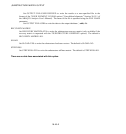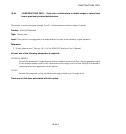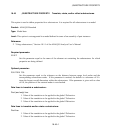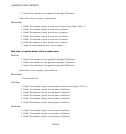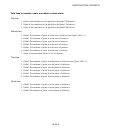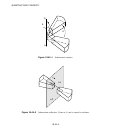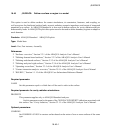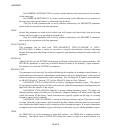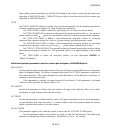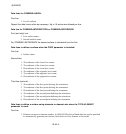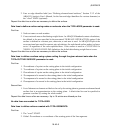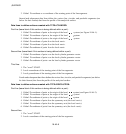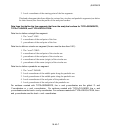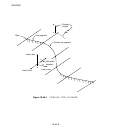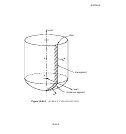*
SURFACE
Set COMBINE=INTERSECTION to create a surface based on the intersection of two surfaces
of the same type.
Set COMBINE=DIFFERENCE to create a surface based on the difference of two surfaces of
the same type (the second surface is subtracted from the first).
Only the NAME parameter and, in cavity radiation simulations, the PROPERTY parameter
can be used in conjunction with this parameter.
CROP
Include this parameter to create a new surface that will contain only those faces from an existing
surface that have nodes in a specified rectangular box.
Only the NAME param eter and, in cavity radiation simulations, the PROPERTY parameter
can be used in conjunction with this parameter.
FILLET RADIUS
This parameter can be used with TYPE=SEGMENTS, TYPE=CYLINDER, or TYPE=
REVOLUTION to define a radius of curvature to sm ooth discontinuities between adjoining
straight-line segments, adjoining circul ar-arc segments, and adjoining straight- line and circular-ar c
segments.
INTERNAL
ABAQUS/CAE uses the INTERNAL parameter to identify surfaces that are created internally. The
INTERNAL parameter is used only in m odels defined in terms of an assembly of part instances.
The default is to omit the INTERNA L parameter.
REGION TYPE
This parameter is relevant only for surfaces defined on the boundary of an adaptive m esh domain. A
surface defined in the interior of an adaptive mesh dom ain will move independently of the material
unless the surface is constrained by mesh constraints. See “Defining ALE adaptive mesh domains
in ABAQUS/Explicit,” Section 12.2.2 of the ABAQUS Analysis User’s Manual.
Set REGION TYPE=LAGRANGIAN to create a Lagrangian boundary region. The edge of
a Lagrangian boundary region will follow the material while allowing adaptive m eshing along the
edge and within the interior of the reg ion.
Set REGION TYPE=SLIDI NG (default) to create a sliding boundary region. The edge of a
sliding boundary region will slide over the material. Adaptive meshing will occur on the edge and
within the interior of the region. Mesh constrain ts are typically applied on the edge of a sliding
boundary region to fix it spatially.
Set REGION TYPE=EULERIAN to create an Eulerian boundary region. This option is used
to create a bounda ry region across which mater ial can flow. Mesh constraints must be used normal
to an Eu lerian boundary region to allow material to flow through the region. If no mesh constraints
are a pplied, an Eulerian boundary region will behave in the same way as a sliding boundary region.
TRIM
Set TRIM=YES to invoke trimming of open free surfaces. Set TRIM=NO to suppress surface
trimming. The default value is TRIM=YES unless the surface is used as a master surface in a
18.46–2
ABAQUS Version 6.1 Module:
ID:
Printed on:



